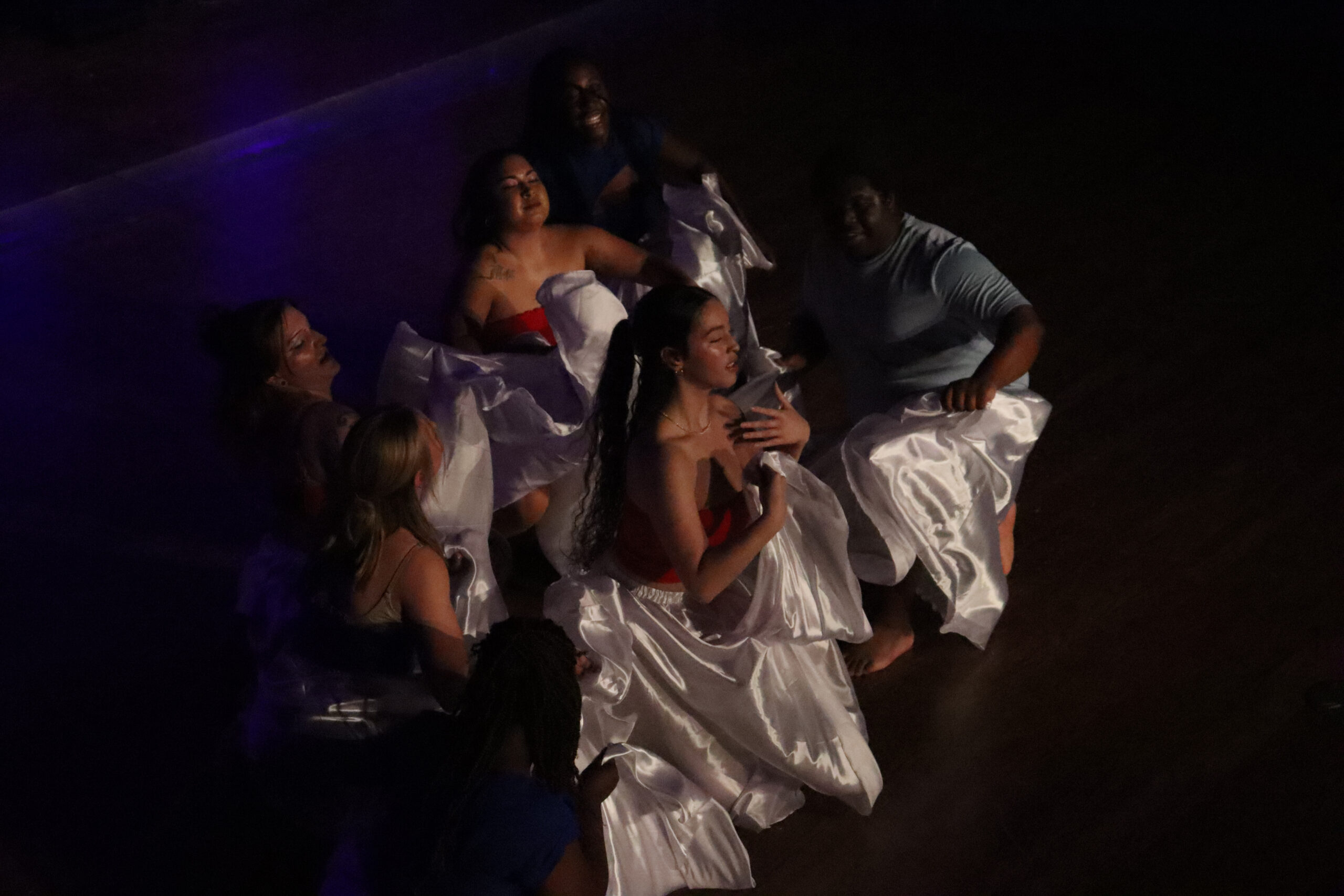On April 5, Georgetown’s Latin dance group, Ritmo y Sabor, filled Gaston Hall with the vibrant colors, smooth rhythms, and energetic movements of the Américas. Their spring showcase included over 15 performances representing unique music and dance from countries across the Latin world.
The theme, “Vuelta a las Américas,” promised the audience a one-night trip across the Américas—with Ritmo y Sabor as the flight attendants.
The journey took off with an intro performance by the entire team, then highlighted different dance styles, including Mexican cumbia, Colombian salsa, Brazilian samba, and Argentinian tango. The first half of the show included a guest performance by Ballet Folklórico Mexicano de Georgetown, representing a more classical Latin dance style. After a brief intermission, the second half included a guest performance by Groove Theory, senior send-offs for both undergraduate and graduate members, and an energetic finale embodying the show’s theme of visibility and pride.
While each dance showcased the team’s incredible talent and the respective style’s cultural significance, a handful stood out.
Bomba, one of Puerto Rico’s oldest dances, originated as a means for the country’s African population to resist enslavement and seek spiritual relief. In flowing silvery skirts, the dancers fluttered across the stage, their elegance perfectly capturing the freedom of spirit central to the dance’s origins.
Haitian konpa, or kompa, is distinguished by its intimate partner work, smooth hip movements, and body isolations. In all-black outfits, the dancers moved sensually to the rhythm, looking exclusively at their partners. This piece not only demonstrated the tight-knit dynamic among team members, but it also represented the feeling of losing sense of reality when overcome with affection.
Set to the song “BEBÊ” by Camilo and Gusttavo Lima, the team’s bachata number portrayed the style’s central themes of love, heartbreak, and desire. In simple black and green costumes, dance partners showed off their syncopated steps with perfect chemistry, smiling into each other’s eyes as they took soft, quick steps. Coupled with the song’s sweet, mellow beat, this number masterfully encapsulated the little everyday happinesses of being in love.
In the second half, dancers honored the Dominican Republic’s merengue típico, the country’s oldest and most commonly played merengue style. Merengue típico songs are composed in two parts: the first establishes lyrical and rhythmic material, while the second introduces more complex beats and mambo. In sparkling gold dresses and blue tops, the dancers matched the song’s two-part composition with footwork that grew more intense as the song progressed. The dancers’ steps crescendoed to an untraceable blur, stopping suddenly in a bold final pose.
In an homage to Venezuela, this year’s show included a tambores performance. Traditionally performed in a circle, it’s marked by a call-and-response dynamic between dancers and drummers. In long red skirts, the dancers expertly navigated complex formation changes while demonstrating the style’s hallmark footwork.
For choreographer Alejandra Cova (SOH ’26), this number was special, as her mother helped choreograph the dance.
“I grew up dancing and always knew I liked it, but I never thought that I could create dances and produce a form of artwork that I could become so proud of,” she wrote to the Voice.
Ritmo y Sabor’s performance explored not only the diverse cultures of the Latin world, showcasing various countries and dances, but also myriad human emotions—from yearning to loss, love to heartbreak, joy to grief.
This year’s show also featured Ritmo y Sabor’s first-ever contemporary piece. It sought to represent the memories that haunt us like fantasmas, or ghosts.
“Perhaps these moments are ones we had in our countries of origin or in our childhood homes. Now, they feel like a distant dream, one we wish we never woke up from. We aim to physically convey these profound sentiments of the human experience, love and loss,” Tyvheen Robles (MSB ’25), Ritmo y Sabor’s head of marketing, said.
In elegant white dresses emulating fantasmas, this dance included seven dancers, leaving one alone during partner work to complete solo sequences. The isolation was emblematic of fondly remembering a happy memory amid heartbreak over its passing. In the outro, the dancers left the stage one by one, their fluttering goodbyes embodying what it feels like to have a moment slip through your fingers.
Ritmo y Sabor also emphasized the timely significance of its show.
“Given the state of the world and the challenges the Latinx community has been facing, and as a Latina myself, I feel it is imperative to address that it is a privilege we can be here with our loved ones, dancing freely and celebrating the diverse culture this team represents,” Co-Director Priscila Nicole Putzulu (CAS ’25) said.
Putzulu pointed to the Trump administration’s crackdown on immigration that dehumanizes migrants, especially those of Latin origin, and has resulted in deportations which judges and legal scholars have called unconstitutional.
Against the backdrop of these injustices, the Ritmo team recognized the importance of celebrating Latin heritage, especially at a predominantly white institution. “Vuelta a las Américas” was not just a showcase of Latin culture, but an active resistance against the current administration’s attempt to scrub the U.S. of Latin joy.
“In the words of Bad Bunny, ‘Aquí mataron gente por sacar la bandera, por eso es que ahora yo la llevo donde quiera,’” Putzulu added, calling on Bad Bunny’s “LA MuDANZA.” It translates to “they killed people here for waving the flag, that’s why I bring it anywhere I want now.”
“Anyone who knows me knows I am a walking Argentinian flag,” Putzulu continued. “So I urge you all, whether you’re Latinx or belong to another community and culture, to be visible and to be proud. Our goal with this show was to do exactly that.”





